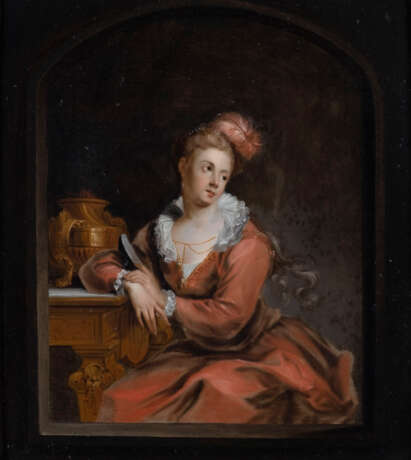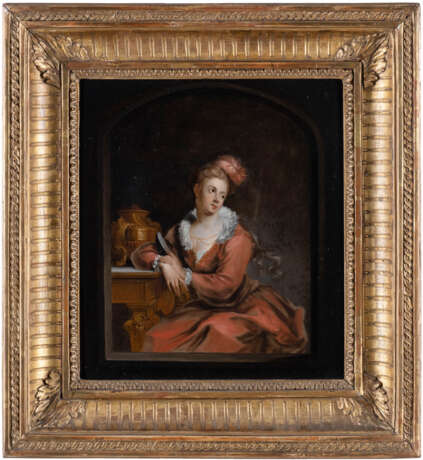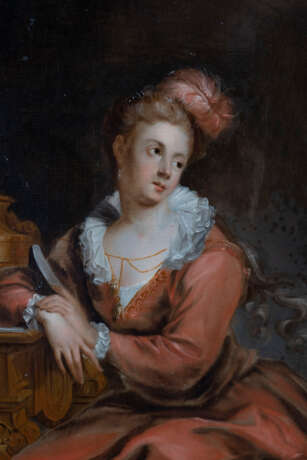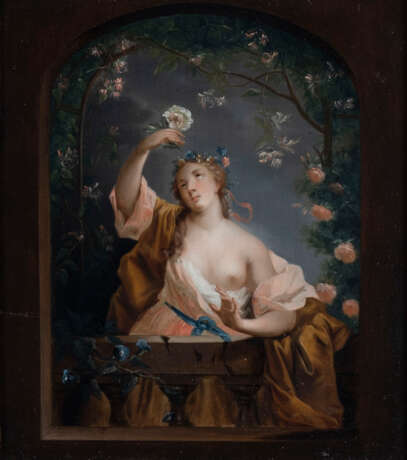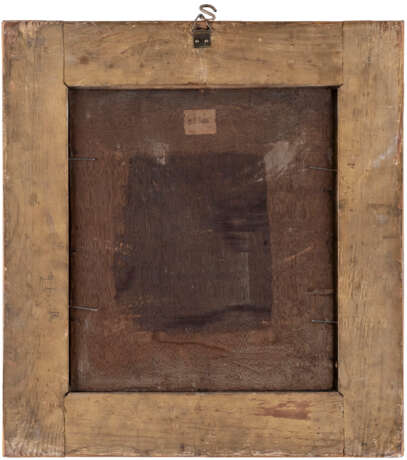ROBERT LE VRAC TOURNIÈRES (ODER WERKSTATT), ALLEGORIE DER VIER JAHRESZEITEN: FRÜHLING, SOMMER, HERBST UND WINTER (GRUPPE AUS VIER GEMÄLDEN)
11.09.2021 10:00UTC +01:00
Classic
Продан
22000EUR € 22 000
| Auctioneer | Hargesheimer Kunstauktionen Düsseldorf |
|---|---|
| Место проведения | Германия, Düsseldorf |
| Комиссия | 28.56% |
Архив
Аукцион завершен. Ставки на лот больше не принимаются.

ID 601654
Лот 2670 | ROBERT LE VRAC TOURNIÈRES (ODER WERKSTATT), ALLEGORIE DER VIER JAHRESZEITEN: FRÜHLING, SOMMER, HERBST UND WINTER (GRUPPE AUS VIER GEMÄLDEN)
Оценочная стоимость
€ 22 000
ROBERT LE VRAC TOURNIÈRES (ODER WERKSTATT) 1667 Caen - 1752 Ebenda ALLEGORIE DER VIER JAHRESZEITEN: FRÜHLING, SOMMER, HERBST UND WINTER (GRUPPE AUS VIER GEMÄLDEN) Jeweils Öl auf Eichenholztafel. Jedes: 28,5 x 25 cm (R. 41,5 x 38 cm). Im Frühling vorne in der Balustrade Signaturreste: ' ..our ...'. Verso: Jede Tafel auf altem Papierlabel nummeriert. Part. leicht altrest., partiell min. Farbverluste (unbedeutend), partiell kleinere Altretuschen. Alle Gemälde mit identischen Rahmen des späten 18. Jahrhundert Robert Le Vrac Tournières, geboren und gestorben in Caen (1667-1752), hatte eine lange und glanzvolle Karriere. Fast ein halbes Jahrhundert lang besuchte eine aristokratische und bürgerliche Kundschaft seine Werkstatt, in der er sowohl eine von Rigaud geerbte Kunst, als auch eine Produktion von kleinen Gemälden im nordischen Stil und dekorativen Allegorien anbot. Ein wichtiger Meilenstein in der Geschichte der französischen Portraitmalerei. Das Musée de Caen verfügt über eine bedeutende Sammlung seiner Werke. Die Allegorien der vier Jahreszeiten orientieren sich nach Robert Le Vrac de Tournierères' Werken und entstanden nach den Stichen von Nicolas Château aus den Jahren 1711 bis 1713.Für die im 18. Jahrhundert typischen Attribute der Jahreszeitenfolgen ist jeweils eine Frau umgeben von unterschiedlichen Attributen dargestellt. Der Vierjahrenzeitenzyklus ist eine typische Darstellung des 18. Jahrhunderts. Die Frauen, die dargestellt werden, sind oft unterschiedlich alt. So ist die Dame im Frühling sehr jung und im Winter bereits gealtert. Es wird die Vergänglichkeit der Natur und auch die der Menschen dargestellt. Herzlich danken wir Frau Kathrin Eschenberg für die Bearbeitung dieses Katalogbeitrages. Literatur: Zu den vier Allegorien vgl.: Robert Le Vrac Tournières. Les facettes d'un portraitiste. Katalog zur Ausstellung im Musée de Beaux-Arts de Caen, vom 14. Juni bis 21 September 2014, S. 58-61. Provenienz: Hessische Privatsammlung.
| Категория аукционного дома: | Картины Старых Мастеров |
|---|
| Категория аукционного дома: | Картины Старых Мастеров |
|---|
| Адрес торгов |
Hargesheimer Kunstauktionen Düsseldorf Friedrich-Ebert-Strasse 11+12 40210 Düsseldorf Германия | ||||||||||||||
|---|---|---|---|---|---|---|---|---|---|---|---|---|---|---|---|
| Предосмотр |
| ||||||||||||||
| Телефон | +49 (0) 2113020010 | ||||||||||||||
| Факс | +49 (0) 21130200119 | ||||||||||||||
| Комиссия | 28.56% | ||||||||||||||
| Условия использования | Условия использования | ||||||||||||||
| Транспортировка |
Почтовая служба Самовывоз | ||||||||||||||
| Способы оплаты |
Банковский перевод | ||||||||||||||
| Часы работы | Часы работы
|





